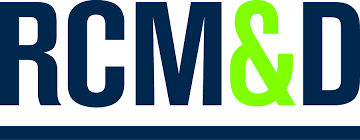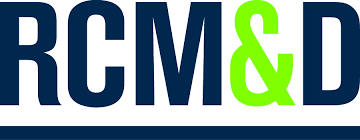Title Page
-
Conducted on
-
Prepared by
-
Location
Science Laboratories
Administrative
-
Do the lab staff have access to the current version of the Notre Dame Laboratory Safety Manual?
-
Do all lab personnel have access to written SOPs that document safety procedures?
-
Do all lab staff know how and when to report accidents, incidents, or near-misses?
-
Is food and drink prohibited in laboratory areas?
Signage
-
Are emergency contact numbers for lab staff, including after hours emergency contact numbers, posted within the laboratory?
-
Is a lab hazard caution sign posted and current?
-
Is a bio-safety sign posted when agents are in use?
-
Are additional hazard warning signs (laser, magnetic fields, high voltage, etc.) posted in the lab near the hazard?
-
Is a laboratory floor plan as described in the Laboratory Safety Manual posted?
Hazard Communication
-
Has the lab's chemical inventory been reviewed and updated within the last year?
-
Can all lab staff readily access an MSDS/SDS either digitally or by hard copy?
-
Are all containers clearly labeled with their contents and primary hazard(s)?
Training
Emergency Kits
-
Does the laboratory have access to chemical/biological spill kits?
-
Do lab staff have access to a fully stocked first aid kit?
Personal Protective Equipment
-
Has a PPE hazard assessment been completed for all laboratory activities?
-
Have all lab personnel and students completed PPE training?
-
Are safety googles and lab coats required for all lab activities?
-
Is additional PPE required for task specific lab activities (chemical resistant gloves, face shield, respirators, etc.)?
-
If respirators are being used, have personnel and students been fit tested?
Emergency Eyewash/Shower
-
Are eyewashes and showers easily accessible in each laboratory?
-
Are eyewashes and showers routinely flushed?
Ventilation
-
Are processes that emit vapors, gasses, or fumes adequately captured by local ventilation?
-
Are fume hoods kept uncluttered and are rear ventilation slots within the hood unblocked/covered?
Hazardous Waste Disposal
-
Are chemical waste containers in good condition and compatible with their contents?
-
Are chemical waste containers kept closed?
-
Are incompatible chemical wastes segregated by hazard class?
-
Are all chemical waste containers labeled?
-
Is lab glass placed in sturdy cardboard boxes that are labeled "BROKEN GLASS"?
Chemical Storage
-
Are flammable chemicals stored in an approved flammable storage cabinet?
-
Are hazardous materials dated, rotated, inventoried annually, and disposed of properly?
-
Are all chemical containers in good condition (no corrosion or leaking)?
-
Are all chemical containers kept closed?
-
Are incompatible chemicals segregated when they are being stored?
-
Are chemicals stored per a recognized system (i.e.: Flinn)?
-
Are chemicals stored on shelves below eye level?
-
Are chemicals stored on shelves with abrasive surfaces or lips to prevent spills?
Compressed Gas Cylinders
-
Are highly toxic gas cylinders stored in a gas cabinet, ventilated enclosure, or fume hood?
-
Are incompatible compressed gas cylinders segregated?
-
Are gas cylinder valve protection caps in place for gas cylinders not in active use?
-
Are compressed gas cylinders secured to prevent them from falling or tipping?
Housekeeping
-
Is the lab free of slip and trip hazards?
-
Is the lab adequately organized, orderly, and clean to provide sufficient work space for operations without spills, accidents, and other preventable incidents?
-
Is there minimal glassware stored in the sink or on the bench top?
-
Are lab coats regularly laundered?
Fire Safety
-
Are fire extinguishers available, easily accessible, and free of obstructions?
-
Are the appropriate class of fire extinguishers provided for the lab activities (Class B for Flammable Liquids, Class D for Metals, etc.)?
-
Is a fire blanket provided in the lab room?
Machinery
-
Are all hazardous pieces of machinery mounted or secured to prevent movement or tipping?
-
Are all points of operation, rotating components, and other moving parts of machinery properly guarded to prevent injury?
-
Is laboratory equipment with potential hazards routinely inspected and maintained or serviced as recommended?
Facilities Department
General Work Environment
-
Are all work sites clean and orderly? (Include pictures).
-
Are all work areas adequately illuminated?
-
Are covered metal waste cans used for oily and paint soaked waste?
-
Are all hand and power tools stored properly and kept in good condition?
-
Are flammable liquids and chemicals stored properly and kept in a reasonable quantity?
-
Are fire extinguishers easily accessible and fully charged?
-
Are aisles and walkways that pass near moving or operating machinery arranges so employees are not subjected to hazards?
-
Are materials and equipment stored in such a way that protuberances do not interfere with the walkway?
-
Are materials and equipment stored in such a way that they cannot shift or fall?
Personal Protective Equipment (PPE)
-
Are approved safety glasses required to be worn at all times in areas where there is a risk of eye injuries such as punctures, abrasions, contusions, or burns?
-
Does the facility have adequate eye wash stations in areas where there is a risk of eye injuries?
-
Are protective gloves, aprons, shields, or other means provided to protect against cuts, corrosive liquids, and chemicals?
-
Are hard hats provided and worn where there is a danger of falling objects?
-
Are hard hats inspected periodically for damage to the shell and suspension system?
-
Is appropriate foot protection required where there is a risk of foot injuries?
-
Is all PPE maintained and stored in a sanitary condition and ready for use?
-
Is specialized equipment such as gloves provided when working with electricity?
-
Is hearing protection provided for jobs or in areas with excessive noise?
Portable Ladders
-
Are all ladders maintained in good condition, joints between steps and side rails tight, all hardware and fittings securely attached, and no signs of excessive ware?
-
Are all ladders equipped with non-slip safety feet that are in good condition?
-
Are all ladder rungs and steps free of grease and oil?
-
Is it prohibited to place a ladder in front of doors opening toward the ladder except when the door is blocked open, locked, or guarded?
-
Are all ladder rungs uniformly spaced at 12 inches apart?
-
Are all ladders regularly inspected for damage?
-
Are employees instructed to tag and remove all damaged ladders from service?
-
Are employees instructed to not use the top two steps of ordinary stepladders as a step?
-
Are employees instructed, when gaining access to an elevated surface, to tie off ladders or extend the top at least three feet above the elevated surface?
-
Are employees instructed in safe ladder practices such as maintaining three points of contact, remaining within the side rails, and facing the ladder when ascending/descending?
Hand Tools & Equipment
-
Are all tools and equipment (both college and employee owned) in good condition, free of cracks, burns, corrosion, or other signs of ware?
-
Are hand tools such as chisels and punches, which develop mushroomed heads during use, reconditioned or replaced as necessary?
-
Are broken or fractured handles on hammers, axes, and similar equipment replaced immediately?
-
Are worn or bent wrenches replaces regularly?
-
Are cutting tool edges kept sharp so the tool will move smoothly without binding or skipping?
-
Are tools stored in a dry and secure location where they will not be tampered with?
-
Are employees made aware of hazards caused by faulty or improperly used hand tools?
Power Operated Tools & Equipment
-
Are all power operated tools provided with appropriate safety guards as recommended by the manufacturer?
-
Are all guards properly installed and show no signs of removal or tampering?
-
Are all cord-connected, electrically operated tools and equipment effectively grounded or of the approved double insulated type?
-
Is hoisting equipment available and used for lifting heavy objects and are the hoist ratings/characteristics appropriate for the task?
-
Are pneumatic and hydraulic hoses on power-operated tools checked regularly for deterioration or damage?
-
Are the work rests on all abrasive wheels adjusted to within 1/8 inch of the wheel?
-
Are the top guards on all abrasive wheels adjusted to within 1/4 inch of the wheel?
-
Do the side guards on all abrasive wheels cover the spindle, nut, flange, and 75% of the wheel diameter?
-
Is the maximum RPM rating of each abrasive wheel compatible with the RPM rating of the motor?
-
Are the benches and pedestals for all abrasive wheels permanently mounted?
-
Are all new abrasive wheels visually inspected and ring tested prior to mounting?
-
Are dust collectors provided on all grinders used in operations that produce an abundance of dust?
Power Actuated Tools
-
Are employees who operate power actuated tools trained in their use and carry a valid operator's card?
-
Is each power actuated tool stored in its own locked container when not in use?
-
Are signs reading "POWER ACTUATED TOOL IN USE" conspicuously posted in the areas where the tools are being used?
-
Are power actuated tools left unloaded until they are actually ready to be used?
-
Are power actuated tools inspected for obstructions or defects each day prior to use?
Dining Services
Kitchen & Food Operations
-
Are kitchen waste materials stored in metal containers with tight-fitting lids kept in designated areas and removed by carts to compactor or dumpster?
-
Are deep fryers controlled and provided with high-temperature shut offs and overflow gutters?
-
Are exhaust system filters cleaned daily?
-
Are exhaust systems hoods and ducts located away from any combustible materials?
-
Are vapor-proof electric lights and conduit wiring provided fro electrical equipment located in exhaust-system hoods?
-
Are slip resistant mats provided for dish washing areas?
-
Are floors adjacent to deep fryers dry and free of grease?
-
Are floors adjacent to soft drink syrup tanks cleaned regularly?
-
Are knives placed in sheaths when not in use?
-
Are proper guards installed on all meat slicing machines?
-
Are chairs and tables free of pinch points and sharp edges?
Food Handling Practices
-
Is food kept in pans of containers located off of the floor?
-
Are perishable or potentially hazardous food properly stored and not held at room temperature?
-
Are fruits and vegetables thoroughly washed prior to preparation and serving?
-
Are food warmers and steam tables used to heat prepared foods and holding temperature?
-
Are frozen foods properly thawed under refrigeration or under cold running water or cooked directly from frozen state?
-
Are cutting boards washed and sanitized when switching between raw food and cooked/ready-to-serve food?
-
Are utensils (not hands) used to pick up rolls, bread, butter, pats, ice, or other food to be served?
-
Do employees wash hands after wiping tables and busing soiled dishes prior to handling place settings and serving food?
-
Are food servers careful to not touch food contact surfaces of plates, cups, and silverware when setting tables or serving customers?
Fire Safety
-
Are automatic wet-chemical extinguishing systems installed in the hoods and ducts above ranges, grills, and fat fryers?
-
Are extinguishing systems inspected and serviced by a qualified person on an annual basis?
-
Do fuel supplies for cooking equipment have automatic shut-off valves that activate with the extinguishing system?
-
Are the proper types and quantity of fire extinguishers unblocked and readily available?
-
Are fire extinguishers properly charged, tagged, and inspected?
-
Are fire extinguishers properly wall-mounted and located appropriately for the hazards involved?
-
Are employees trained in proper use of extinguishers and manual operation of dry or wet chemical systems protecting cooking equipment?
-
Are sprinkler system control valves secured in the open position?
-
Is there 3 feet of clearance around the sprinkler system's main control valve?
-
Do all sprinkler heads have a minimum of 18 inches clearance?
-
Is the water pressure of the sprinkler system indicated on the system's lower gauge?
-
Is the sprinkler system's local electric or water-motor alarm bell operable and auditable?
-
Is the sprinkler system periodically tested and maintained with a written record kept on the premises?
-
Are the sprinkler system's alarms monitored offsite at a constantly attended location (Fire Department or Alarm Central Station)?
-
Are employee instructed in evacuation procedures for both customers and employees?
Pools
General Safety
-
Are "No Diving" signs clearly posted and legible?
-
Are pool depths are clearly and accurately marked?
-
Is safety and rescue equipment is available and in working order (shepherd's hook, life ring, backboard, first aid kit, etc.)?
-
Is the pool area secured during non operating hours?
-
Is unauthorized entry prevented during non-operational hours by using enclosures such as fencing, gates, locks, etc.?
-
Are "No lifeguard on duty" signs clearly posted when pool is not staffed?
-
Is pool lighting sufficient and working properly?
-
Are documented inspections of the pool area lerformed on a regular basis to ensure the safety and security of the area?
Are lifeguards required to:
-
Be at least 16 years old?
Maintain a current lifeguarding certification from a nationally recognized agency such as:
-
American Red Cross?
-
YMCA?
-
StarGuard?
-
Ellis & Associates?
-
Other?
Maintain certification in life saving skills such as:
-
Cardiopulmonary Resuscitation (CPR)?
-
First Aid?
-
Automated External Defibrillator (AED) use?
-
Emergency Oxygen administration?
-
Other?
Emergency Planning
-
Does the facility have a response plan for bodily fluids (feces, vomit, or blood)?
-
Does the facility have a response plan for inclement weather?
-
Does the emergency plan include methods of communication with first responders, emergency services, and pool patrons?
Operations Manual
-
Is the operations manual accessible at the pool?
-
Does the manual include a list of pool chemicals and instructions for their safe handling?
-
Does the plan detail communication protocols for notifying administrators and closing the pool?
Water Quality Monitoring
-
Does the facility maintain a chemical inventory that provides a list of chemicals used?
-
Is proper Personal Protective Equipment provided for safe handling of pool chemicals?
-
Is an eye wash station located in the pool chemical storage area?
-
Is water quality and chemical levels monitored on a daily basis?
Art Department
General Safety
-
Does the studio/shop present a clean and overall safe working environment?
-
Is there a telephone nearby with emergency numbers posted? Do Shop personnel know who to contact in the event of an emergency?
-
Is everyone in the studio/shop wearing proper personal protective equipment for the task they are performing (coveralls, safety glasses, gloves, respirators, hearing protection)?
-
Are eyewash/showers properly located, clearly visible, and unobstructed?
-
Are eyewash/showers tested and flushed monthly?
-
Are spray painting operations performed inside a an approved spray painting booth?
-
Is food and drink kept out of the studio/shop at all times?
-
If NIOSH approved respirators are used, have personnel been fit tested and trained on proper use and limitations?
-
Are machinery and tools inspected periodically and maintained/repaired as needed?
-
Are kilns ventilated, inspected, and managed appropriately?
-
Are all machine guards installed per the manufacturer's recommendation and in working condition?
Hazardous Waste Management
-
Are waste containers being used for the correct type of waste?
-
Are all liquid hazardous waste containers stored in a secondary containment unit?
-
Are all waste containers labeled with hazardous waste labels?
-
Are incompatible wastes segregated by distance or secondary containment?
-
Are the waste containers in good condition and compatible with the waste they contain?
-
Are all oily/solvent soaked rags collected in an appropriate metal flameproof container with a lid?
-
Are waste containers kept securely closed except when adding waste?
-
Is the hazardous waste vendor contacted promptly when a container is filled?
Performing Arts/Theater
Fire Prevention, Emergency Exits, and Emergency Response
-
Are emergency phone numbers posted near a phone in the theater?
-
Are all self closing fire doors free to close without obstructions?
-
Are emergency exit doors free of obstructions on both sides of the door?
-
Are exits properly marked and illuminated?
-
Are fire extinguishers mounted, accessible, fully charged, and serviced within the last 12 months?
-
Is emergency communication equipment operational?
-
Are occupancy limits posted near the main exit of large rooms and assembly areas?
-
Are evacuation maps posted near the main exit of large rooms and assembly areas?
-
Are first aid kits fully stocked and easily accessible?
-
Are flammable and combustible materials stored away from ignition sources?
Storage
-
Are storage shelves arranged in a safe manner (no risk of tipping) and not overloaded?
-
Are file draws kept closed when not in use?
-
Are materials stored to minimize unecessary climbing, reaching, and bending?
-
Are there no stored items within 18 inches of sprinkler heads?
Electrical Hazards
-
Are cords and plugs in good condition with no exposed or taped wires?
-
Are extension cords only used on a temporary basis?
-
Are electrical appliances free of daisy chaining?
-
Are outlets and switch cover plates present?
-
Are breakers and fuse switches identified?
-
Are electrical panels free of obstructions and have 36 inches of clearance?
Walking Surfaces, Stairways, & Ramps
-
Are the building entrances, aisles, and work areas free of any slip, trip or fall hazards?
-
Are walk off mats used and extended during wet weather?
-
Are walk off mats replaced as needed (curling edges and soaked mats)?
-
Is good housekeeping practiced with no trip hazards such as materials, cords, wires, paper, and equipment?
-
Are carpets and rugs secure and in good condition?
-
Are floors clean, dry, and free of slippery materials?
-
Are stairways, ramps, and corridors clear and free of stored materials?
-
Do ramps have non-slip surfaces?
-
Are handrails and guardrails present where required and in good condition?
General Safety and Housekeeping
-
Are work tables, desks, and chairs in good condition?
-
Are step stools and ladders available to facilitate reaching items stored overhead?
-
Are sharp and pointed tools shielded to prevent accidental contact?
-
Are good housekeeping practices in place?
-
Are restrooms clean and fixtures secure?
-
Are Safety Data Sheet Inventories up to date and accessible?
-
Are primary and secondary chemical containers labeled and identify contents and hazards?
Grids/Catwalks
-
Is access to tension grids and catwalks controlled and restricted to unauthorized personnel?
-
Are pall prevention or arrest systems in place and functional on all fixed ladders?
-
Are guardrails (top and mid rails) and toe boards secure on all tension grids and catwalks?
-
Are gates/guards on ladder access openings kept closed?
-
Are counter weights stacked below the top level of toe boards?
-
Are signs present to warn against stacking counter weights higher than the top of the toe boards?
-
Are counter weights evenly distributed along the loading platform?
-
Are tension grids and catwalks free of other stored items?
-
Are tension grids and catwalks free of graffiti?
-
Are light and audio fixtures/equipment secured to battens with primary and secondary restraints?
-
Are all rigging ropes and cables in good condition and routinely inspected by a qualified person?
-
Are all rigging ropes and cables inspected by a qualified outside contractor every 5 years?
-
Are hoists and beams clearly labeled with maximum capacities?
-
Are line set weight-capacity signs present on the loading bridge?
-
Are personnel using personal fall protection devices appropriately?
-
Are personnel wearing hard hats with chin straps areas with low overhead clearance?
-
Do personnel tie off tools when working on elevated surfaces?
-
Are personnel wearing other personal protective equipment as required by the task?
-
Safety and warning signs present in appropriate areas?
-
Is access to controlled areas restricted to unauthorized personnel?
Fire and Life Safety
Fire Safety & Evacuation Plans
-
Are all exit doors unlocked during business hours?
-
Are all exits, aisles, corridors, or stairways clear and free of obstructions?
-
Does the hardware of all exit doors in good condition and functioning properly?
-
Is the area beneath stairs free of stored items?
-
Do all lighted exit signs and emergency lighting functioning properly?
-
Are fire safety and evacuation plans implemented and communicated to all occupants?
-
Are employees trained in fire safety and evacuation plans at orientation and again annually?
-
Are evacuation drills conducted periodically?
Housekeeping
-
Are all areas free from combustible waste material that creates a fire hazard?
-
Are combustible materials kept clear of ignition sources?
-
Are oily and greasy rags kept in self-closing metal cans?
-
Are exits and exit enclosures clear of combustible material storage?
-
Are mechanical, electrical, and boiler rooms clear of combustibles?
-
Are flammable liquids stored away from exits, aisles, corridors, or stairways?
-
Are flammable liquids stored in approved portable containers?
-
Are flammable liquid containers in excess of 10 gallons stored in approved flammable storage cabinets?
-
Are all sprinkler heads unobstructed with a minimum of 18 inches of clearance?
-
Are all compressed gas cylinders properly used, stored, and secured upright to prevent tipping?
Fire Prevention/Protection
-
Are fire alarms inspected, tested and maintained according to NFPA 72?
-
Are sprinkler systems (water) inspected, tested and maintained according to NFPA 25?
-
Are other fire suppression systems inspected, tested and maintained?
-
Are fire pumps inspected, tested and maintained according to NFPA 25?
-
Are emergency generators tested monthly?
-
Are smoke detectors located in proper ares and tested periodically?
-
Is the sprinkler system water supply valve accessible and locked in the "ON" position?
-
Are the sprinkler control valves are on and all zones are pressurized?
-
Is a sprinkler system impairment program is in place?
-
Do fire lanes provide access to the building and remain unobstructed?
-
Is access to all fire protection equipment unobstructed (OSY valves, etc.)?
-
Are fire extinguishers visually inspected monthly/ tested annually (NFPA 10)?
-
Are fire extinguishers available, visible, and unobstructed (NFPA 10)?
-
Are there designated smoking areas with "No Smoking" signs posted and is the policy enforced?
-
Are self-closing fire doors function properly and free of obstruction?
Electrical
-
Are electrical cords kept in good condition with not broken or frayed cords in use?
-
Are extension cords not used for permanent wiring?
-
Is the electrical wiring, devices, and equipment in good condition with no fire or shock hazards?
-
Are ground fault circuit interrupters used where necessary and tested monthly?
-
Are all multi-plug adapters equipped with overcurrent protection?
-
Are all multi-plug adapters directly connected to a permanently installed receptacle (no daisy chaining)?
-
Are all electrical panels and outlets in good condition, with no wiring exposed, and have covers in place?
-
Are all portable heat producing appliances visually inspected regularly or have an auto shut-off?
Hazardous Materials
-
Are Safety Data Sheets readily available on the premises with an inventory of all hazardous materials?
-
Are there visible hazard identification signs at the entrances where hazardous materials are stored?
-
Are all chemical containers properly labeled?
Dormitories
Fire & Life Safety
-
Are all exits marked with an exit sign and illuminated by a reliable light source?
-
Are the directions to exits, when not immediately apparent, marked with visible signs?
-
Are doors/passageways, that are neither exits nor access to exits, and which could be mistaken for exits appropriately marked "NOT AND EXIT"?
-
Are exits kept free of any obstructions?
-
Are there sufficient exits to permit prompt escape in case of an emergency?
-
Are all exit doors equipped with panic hardware that can be opened easily in case of an emergency?
-
Are all exit doors operable from the direction of exit travel without the use of a key or any special knowledge or effort?
-
Do all exit doors discharge to a clear area free of obstructions or slip, trip, and fall hazards?
-
Do all fire doors close automatically and are free to close/not propped open?
-
Do sprinkler heads have at least 18 inches of clearance?
-
Are all sprinkler heads free from any hanging materials or decorations?
-
Are automatic sprinkler system water control valves and air/water pressures checked weekly/periodically as required?
-
Are all fire extinguishers inspected monthly and properly charged?
-
Are all fire extinguishers free from obstruction and clearly visible?
-
Is a class K fire extinguisher provided in any areas where cooking oils or greases may be used?
-
Are monthly 30 second activation tests performed on all emergency lights?
Groundskeeping
Personal Protective Equipment
-
Are all employees required to wear long sleeved shirts and pants while performing grounds keeping tasks?
-
Are safety glasses, goggles, and face shields used for appropriate tasks?
-
Are appropriate gloves provided and used for task specific jobs?
-
Are steel toed, slip resistant boots used when appropriate?
-
Is appropriate head ware provided and used for specific tasks (straw hats, baseball caps, hard hats)?
-
Is PPE in good working condition, free from cracks, burns, or sun damage?
-
Is sun screen (minimum 30 SPF) available to employees when necessary?
-
Is bug spray available to employees when necessary?
General Safety
-
Have all employees been properly trained on all pieces of equipment?
-
Have all employees read and know where to find the safety manual?
-
Are all employees aware of the hazards associated with operating specific equipment?
-
Are emergency telephone numbers clearly posted?
-
Is a first aid kit available and do employees know how to use the contents?
-
Do all employees have access to the Safety Data Sheet?













